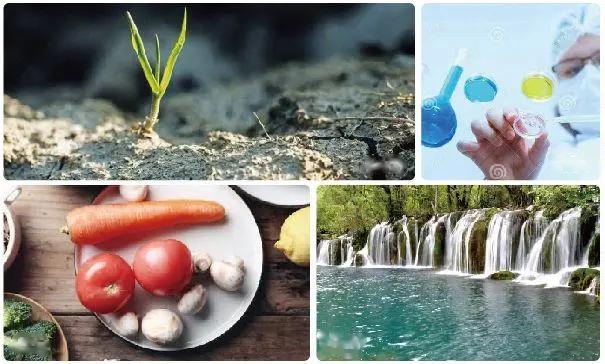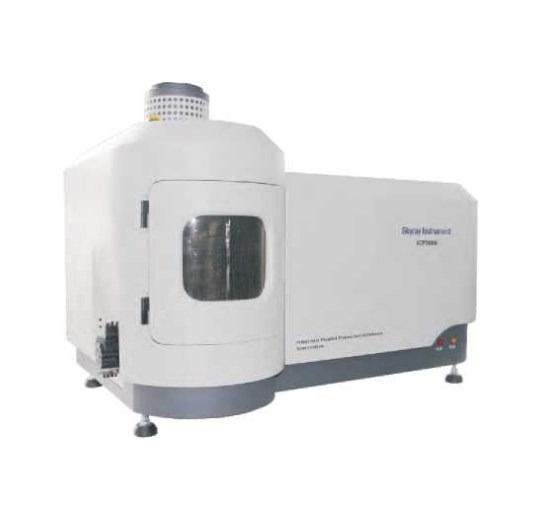Speciation analysis plays a vital role in understanding the chemical forms of elements in complex samples, as the toxicity, mobility, and bioavailability of elements often depend on their specific species. Inductively Coupled Plasma Optical Emission Spectroscopy (ICP-OES), when coupled with chromatography, has emerged as a powerful tool for speciation analysis, offering precise separation and quantification of elemental species. This article explores the significance, methodology, applications, challenges and future trends of ICP-OES coupled with chromatography.

Why Combine ICP-OES with Chromatography
Chromatography excels in separating chemical species in a sample, while ICP-OES provides robust detection and quantification of elements with high sensitivity and multi-element capability. When combined, these techniques deliver comprehensive insights into the elemental composition and the specific species present.

Key benefits include:
- Enhanced Selectivity: Chromatography ensures effective separation of species, allowing ICP-OES to analyze each component individually.
- High Sensitivity and Specificity: ICP-OES detects low concentrations of elements in various species with minimal interference.
- Versatile Applications: The combined approach is suitable for environmental, biological, pharmaceutical, and industrial studies.
How Does the Combination of ICP-OES and Chromatography Work
The integration of ICP-OES spectrometer with chromatography merges the strengths of two powerful techniques: chromatography for separating complex mixtures into individual species and ICP-OES for detecting and quantifying elements in these species.

1. Sample Preparation
Before analysis, the sample undergoes preparation to ensure compatibility with both chromatography and ICP-OES. This involves:
- Filtration or Centrifugation: To remove particulate matter that might clog the chromatographic column.
- Dilution or pH Adjustment: To match the requirements of the chromatography system.
- Complexation (if needed): To stabilize certain species during analysis.
Proper sample preparation for ICP-OES is crucial to minimize interferences and ensure accurate results.

2. Chromatographic Separation
The prepared sample is injected into a chromatography system, such as High-Performance Liquid Chromatography (HPLC) or Gas Chromatography (GC).
- In HPLC, species are separated based on polarity or size as they pass through a stationary phase under the influence of a liquid mobile phase.
- In GC, volatile species are separated based on boiling points as they interact with a stationary phase in a gas stream.
The result is a time-resolved separation of the sample into distinct species, each exiting the chromatographic column at a specific retention time.

3. Transfer to ICP-OES
As the species exit the chromatography system, they are introduced into the ICP-OES plasma using a specialized interface. This interface ensures:
- Continuous Flow: Smooth transfer of separated species to the plasma.
- Preservation of Species Integrity: Preventing the species from degrading or recombining during transit.
In most setups, the effluent from the chromatography system is directly nebulized and transported into the ICP-OES.
4. Elemental Detection in ICP-OES
Once the separated species enter the plasma of the ICP-OES, they undergo the following transformations:
- Nebulization: The liquid sample is converted into an aerosol.
- Atomization and Excitation: High-temperature plasma breaks the species into atoms and excites them.
- Emission Detection: The excited atoms emit light at characteristic wavelengths, which are detected and quantified by the spectrometer.
The intensity of the emitted light corresponds to the concentration of the element within each species.
5. Data Analysis
The output from the ICP-OES is combined with the chromatographic retention times to produce a comprehensive speciation profile. The data reveals:
- Which elements are present in each species.
- Quantitative concentrations of the elements.
- Temporal separation patterns based on retention times.
Summary Workflow:
- Sample Preparation: Ensures compatibility and stability.
- Chromatographic Separation: Resolves species based on chemical properties.
- Interface Transfer: Maintains species integrity for ICP-OES analysis.
- ICP-OES Detection: Quantifies elemental content with high sensitivity.
- Data Integration: Combines retention times and elemental data for speciation insights.

Applications of ICP-OES Coupled with Chromatography for Speciation Analysis
This chart highlights the wide-ranging applications of ICP-OES coupled with chromatography for speciation analysis, demonstrating its importance in identifying and quantifying different chemical forms of elements across numerous disciplines.
| Field | Application | Speciation Examples |
| Environmental Science | Monitoring toxic and essential element species in natural and industrial environments | Arsenic species in groundwater, mercury (Hg2+, MeHg) in sediments, chromium (Cr3+, Cr6+) in effluents |
| Food Safety | Ensuring food quality and safety through speciation of potentially harmful elements | Inorganic and organic arsenic in rice, selenium species in supplements, iodine in dairy products |
| Pharmaceuticals | Evaluating the stability and bioavailability of metal-based drugs | Cisplatin and carboplatin in chemotherapy drugs, zinc and magnesium complexes in dietary supplements |
| Biomedical Research | Investigating the role of metal species in health and disease | Iron species in anemia studies, metalloproteins in blood plasma, arsenic metabolites in urine |
| Industrial Chemistry | Quality control of catalysts and process monitoring in manufacturing | Vanadium species in petroleum refining, cobalt complexes in polymerization, molybdenum in lubricants |
| Geochemistry | Speciation of trace elements in geological and mineralogical samples | Rare earth elements in ores, uranium species in groundwater, thorium isotopes in sediments |
| Toxicology | Assessing human and ecological exposure to hazardous metal species | Lead species in biological tissues, methylmercury in fish, arsenic metabolites in drinking water |
| Energy Sector | Speciation of metals and metalloids in energy production and storage materials | Lithium species in battery components, vanadium and nickel in crude oil, metal species in biofuels |
| Nanotechnology | Characterizing the behavior and transformation of nanoscale materials | Silver nanoparticles in consumer products, gold species in medical devices, titanium oxide species |
| Agriculture | Evaluating trace element speciation in soils, plants, and fertilizers | Selenium in crops, arsenic species in fertilizers, copper species in pesticides |

Challenges and Potential Solutions in Combining of ICP-OES and Chromatography
This chart provides a structured overview of the challenges and outlines practical solutions to improve the efficiency and reliability of ICP-OES coupled with chromatography system.
| Aspects | Challenges | Potential Solutions |
| Interface Compatibility | Efficiently coupling chromatographic separation with the ICP-OES plasma system is complex. | Use specialized interfaces designed for minimal sample loss and optimal flow. |
| Matrix Interferences | Sample matrices may introduce interferences during detection, affecting accuracy. | Implement rigorous sample preparation techniques and matrix-matching standards. |
| Sample Dilution | Chromatographic separation may dilute species, leading to reduced detection sensitivity. | Optimize column design and minimize dead volume in the system. |
| Plasma Instability | Continuous flow from chromatography can destabilize the ICP-OES plasma. | Ensure consistent flow rates and use robust plasma stabilization mechanisms. |
| Detection Limits | The detection limits of ICP-OES may not be sufficient for trace-level species. | Consider alternative detectors, such as ICP-MS, for ultra-trace detection. |
| Complex Data Interpretation | Correlating chromatographic retention times with ICP-OES signals can be challenging. | Use advanced software for real-time data integration and analysis. |
| High Operational Costs | The combined system requires specialized equipment and maintenance, increasing costs. | Evaluate cost-benefit ratios and optimize workflows to reduce operational expenses. |
| Sample Volume Requirements | Chromatography may require larger sample volumes, which is not always feasible. | Use micro-scale chromatography techniques to minimize sample requirements. |
| Temperature Sensitivity | Temperature fluctuations can affect chromatographic separation and plasma stability. | Maintain strict temperature control for both systems. |
| Expertise Requirements | Operating and maintaining the hybrid system requires skilled personnel. | Provide comprehensive training for operators and technicians. |

Future Trends in ICP-OES Coupled with Chromatography for Speciation Analysis
1. Advancements in Instrumentation
- Enhanced Detectors: Development of more sensitive ICP-OES detectors for improved detection of ultra-trace species.
- Compact Systems: Miniaturization of combined systems to save space and facilitate on-site analysis.
- High-Temperature Columns: Chromatographic columns capable of operating under extreme conditions to expand the range of analyzable species.

2. Automated and Real-Time Analysis
- Automation: Fully automated workflows from sample injection to data interpretation to reduce human error and increase throughput.
- Real-Time Data Integration: Advanced software for seamless correlation of chromatographic retention times with ICP-OES data during analysis.
3. Hybrid Detection Technologies
- Multi-Detector Integration: Coupling ICP-OES with other detectors, such as ICP-MS or UV-Vis spectrometer, to broaden analytical capabilities.
- Dual-Mode Detection: Simultaneous detection of elemental and molecular species within the same workflow.
4. Green Chemistry Innovations
- Eco-Friendly Mobile Phases: Development of non-toxic solvents for chromatography to reduce environmental impact.
- Waste Reduction: Systems designed to minimize sample and reagent waste through recycling technologies.
5. Improved Interfaces
- Universal Interfaces: New interfaces capable of accommodating various chromatography techniques, including HPLC, GC, and IC (Ion Chromatography).
- Enhanced Flow Control: Interfaces that maintain consistent flow rates and species integrity during transfer to the ICP-OES.
In summary, the ability to separate and detect species with high accuracy and sensitivity makes ICP-OES coupled with chromatography indispensable for environmental protection, healthcare, and industrial optimization. As innovation continues, the potential applications of this hybrid approach will undoubtedly expand, offering insights into the chemical forms of elements in a wide range of domains.


2.jpg)





